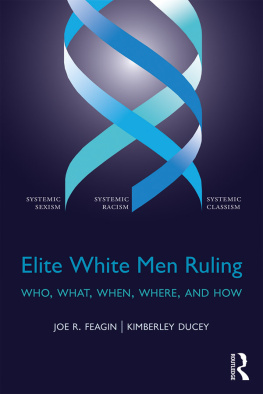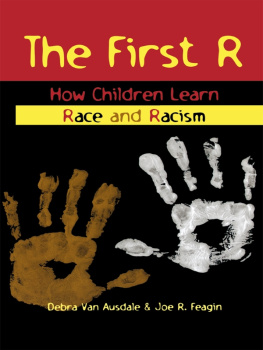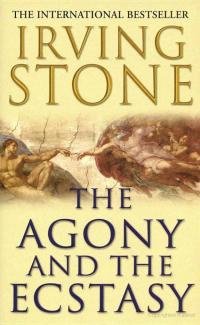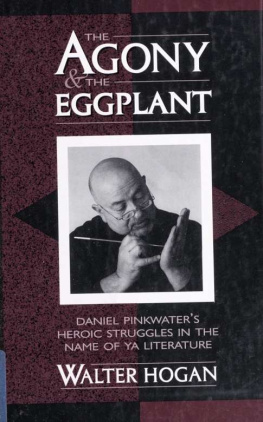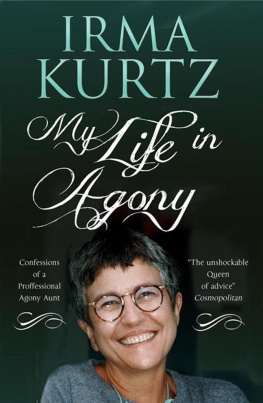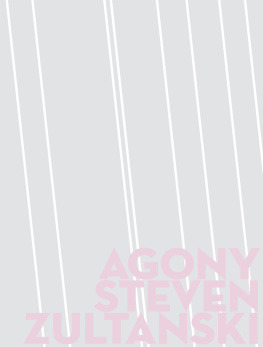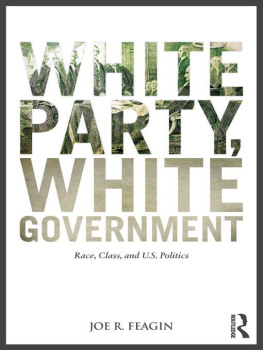First published 1996 by Routledge
Published 2014 by Routledge
2 Park Square, Milton Park, Abingdon, Oxon OX14 4RN
711 Third Avenue, New York, NY, 10017, USA
Routledge is an imprint of the Taylor & Francis Group, an informa business
Copyright 1996 by Routledge
All rights reserved. No part of this book may be reprinted or reproduced or utilized in any form or by any electronic, mechanical or other means, now known or hereafter invented, including photocopying and recording or in any information storage or retrieval system, without permission in writing from the publishers.
Library of Congress Cataloging-in-Publication Data
Feagin, Joe R.
The agony of education : Black students at white colleges and universities / Joe R. Feagin, Hernn Vera, Nikitah Imani.
p. cm.
Includes bibliographical references.
1. Afro-American college studentsSocial conditions. 2. Discrimination in higher educationUnited States. I. Vera, Hernn, 1937 . II. Imam, Nikitah, 1967 . III. Title.
LC2781.7.F43 1996
378.1'98'296073dc20
95-53032
CIP
ISBN 13: 978-0-415-91511-3 (hbk)
ISBN 13: 978-0-415-91512-0 (pbk)
In the fall of 1994, Francis L. Lawrence, the white president of Rutgers University, spoke to a faculty assembly on the admission of African Americans. In a rambling comment he noted that average SAT scores for African Americans were low and asked, Do we set standards in the future so that we dont admit anybody with the national test? Or do we deal with a disadvantaged population that doesnt have that genetic hereditary background to have a higher average? When his words became public months later, Lawrence apologized, saying he had misspoken and had intended to say that standardized tests should not be used to exclude disadvantaged students on the trumped-up grounds that such tests measure inherent ability.
On February 7, 1995, at half-time some 150 mostly black student protesters sat down at mid-court interrupting a Rutgers University basketball game. In the following days numerous students demonstrated on campus and demanded the university presidents resignation. President Lawrence was quick to admit his words were false and insensitive. Yet much damage was done. Lawrences phrase and the subsequent press coverage sent an injurious message to millions of African American students. And unfortunately his kind of comment is common. The African American parents and students at a major state university who shared their experiences with us for this book receive many messages of this sort. Consider the recent public debates on the balanced budget, affirmative action, social welfare, drugs and violent crime, issues that usually become marked by racism in this country. Consider the scholarly works that every decade or so claim to have discovered a genetic inferiority in the average intelligence levels of African Americans and other people of color. It often seems that there is a concerted cultural war against African Americans and other people of color.
The mainstream press generally gave positive reports on President Lawrence, noting that, as the New York Times put it, his career showed a lifetime effort to open campuses to more minority students, faculty and administrators.
One had to read the Village Voice to learn that this supposed church of multiculturalism had actually imposed a gag order on Rutgers University athletes and reportedly pressured them not to participate in the student protests. In this publication alone did one learn that as the black protesters sat on the basketball court some white fans called out nigger, and kill them all. The Village Voice reporters commented that white fans were used to being entertained by African Americans but could not tolerate being enlightened by them. The black students at Rutgers heard their president echo some of the racial insults often leveled at them. When the students protested, the media blamed the universitys alleged political correctness and multiculturalism. The students were denied respect and humanity once again with the accusation that they were trained followers of a multicultural church on a radical college campus.
The students at Rutgers are not alone in their protests over racism. In the spring of 1995, at the University of Texas (Arlington), black students and community leaders protested what they regarded as patterns The serious problems that students of color have with racial discrimination on their campuses was not mentioned in this account from the major U.S. publication on events in higher education.
Significantly, President Lawrences comment came in the middle of much national discussion of a 1994 book by Richard Herrnstein and Charles Murray, The Bell Curve, which argued for genetically determined differences in intelligence that favor white over black Americans. In the fall of 1994, African American students at Howard University held a press conference to protest The Bell Curve and to promote measures to counter the new racist ideology on education and IQ.
Recent books by best-selling analysts like Allan Bloom, Dinesh DSouza, Richard Bernstein, and Arthur Schlesinger assert that historically white colleges and universities have gone through a radical revolution in recent years. In their view, which is shared by many media commentators, the majority of predominantly white colleges and universities are now strong bastions of entrenched multiculturalism. In these colleges and universities African American students and faculty members are alleged not only to have a disproportionate share of the control over campus discussions and rules, but also to dominate a significant portion of the curricula and many classroom discussions. Even some black neoconservative authors, such as Shelby Steele, have portrayed desegregated white campuses as devoted to real equality between white students and students of color and as among the freest and fairest in society.
For these much-heralded authors, the new dominance of multiculturalism and students of color is an academic revolution that has radically decentered white interests, power, and concerns. Indeed, Richard Bernstein, a self-described liberal, begins his book with an extreme metaphor, likening the influence of multiculturalism today to the workings of the Committee of Public Safety during the French Revolution. The Committee perpetrated many atrocities on the French people. Bernstein argues that the rise of multiculturalism has similarities to this historical French terror in its preoccupation with a narrow orthodoxy and the occasional outright atrocity.
This portrait of major colleges and universities is so strong that many academic analysts are at a loss to explain the relatively high black student dropout rate. For any evaluator, the data on black student enrollments and dropout rates are not encouraging. In the mid-1990s black students constitute about 9.3 percent of students in college and universities across the nation. Compared to white students, a substantially lower percentage of African American students complete their degrees at four-year institutions. These statistics cannot be explained adequately by resorting only to such factors as preparedness for college, students family backgrounds, or personal values and attitudes.




